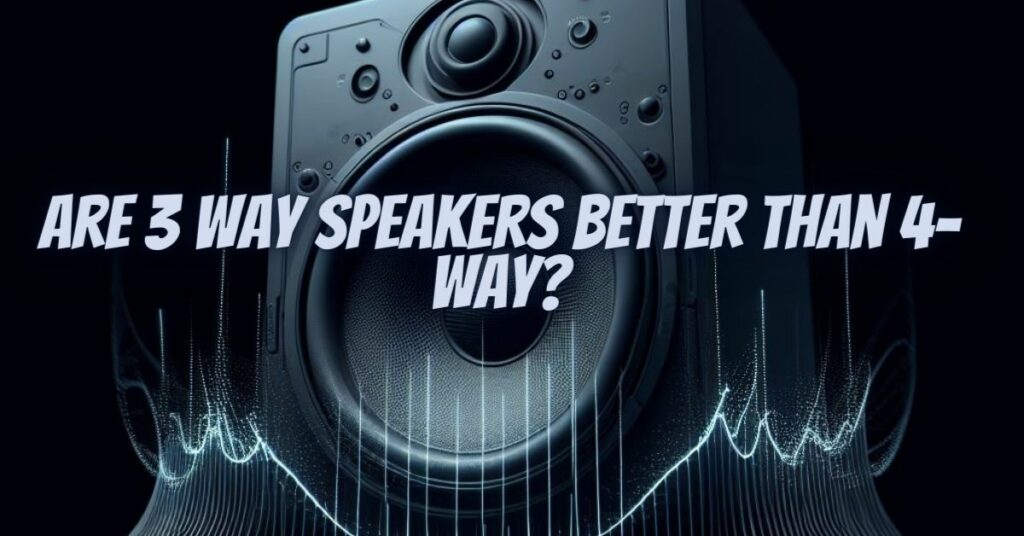The world of audio equipment offers a multitude of choices, and one of the key decisions when selecting speakers is the number of drivers and design complexity. In this article, we’ll explore the debate between 3-way and 4-way speakers, comparing their performance, design intricacies, and whether more drivers necessarily translate into better sound quality.
Defining 3-Way and 4-Way Speaker Systems
To understand the comparison between 3-way and 4-way speakers, let’s break down their fundamental designs:
- 3-Way Speakers: 3-way speakers feature three distinct drivers: a woofer for low frequencies, a mid-range driver for middle frequencies, and a tweeter for high frequencies. These drivers are divided by a crossover network, ensuring that each driver is responsible for specific frequency ranges.
- 4-Way Speakers: In contrast, 4-way speakers add an additional driver, usually called a super tweeter, to the traditional 3-way configuration. This super tweeter is designed to handle ultra-high frequencies, further dividing the audio spectrum for more precise sound reproduction.
Advantages of 3-Way Speakers
- Balance and Clarity: 3-way speakers are renowned for their balanced sound reproduction, thanks to the division of labor among three drivers. This configuration ensures that each driver operates within its optimal frequency range, resulting in clarity and precision in sound.
- Reduced Distortion: The use of three drivers helps in minimizing distortion, even at higher volumes. This results in cleaner audio, making 3-way speakers suitable for both music and home theater applications.
- Wide Frequency Range: The three drivers in 3-way speakers can cover a broad frequency range, making them versatile and capable of reproducing a wide variety of sounds, from deep bass notes to delicate high-frequency details.
- Clear Soundstage: 3-way speakers are known for creating a more defined and expansive soundstage. This means instruments and vocals are positioned more accurately in space, delivering a more immersive listening experience.
Advantages of 4-Way Speakers
- Extended High Frequencies: The inclusion of a super tweeter in 4-way speakers allows them to reproduce ultra-high frequencies with precision. This can add an extra layer of detail, particularly in audio content that features very high-frequency elements, such as certain instruments and special effects.
- Sound Purity: 4-way speakers can maintain sonic purity by preventing lower-frequency drivers from attempting to reproduce ultra-high frequencies, which could result in distortion.
- Specific Applications: 4-way speakers find their strength in specific audio applications, such as professional studio monitoring, where capturing every nuance of high-frequency audio is essential.
The Decision: 3-Way or 4-Way?
Choosing between 3-way and 4-way speakers depends on your specific audio needs and preferences. If you prioritize clarity, reduced distortion, and versatility across various audio content, 3-way speakers may be the better choice. They are suitable for most home audio setups, providing a balanced and immersive sound experience.
On the other hand, 4-way speakers, with their extended high-frequency capabilities, find their niche in specialized applications that demand precise reproduction of ultra-high frequencies. This makes them more common in professional audio environments, particularly in studio settings.
In the end, the decision comes down to your unique requirements and listening preferences. Both 3-way and 4-way speakers have their merits, and selecting the right one will enhance your audio experience, whether you’re a discerning audiophile or a professional sound engineer.


